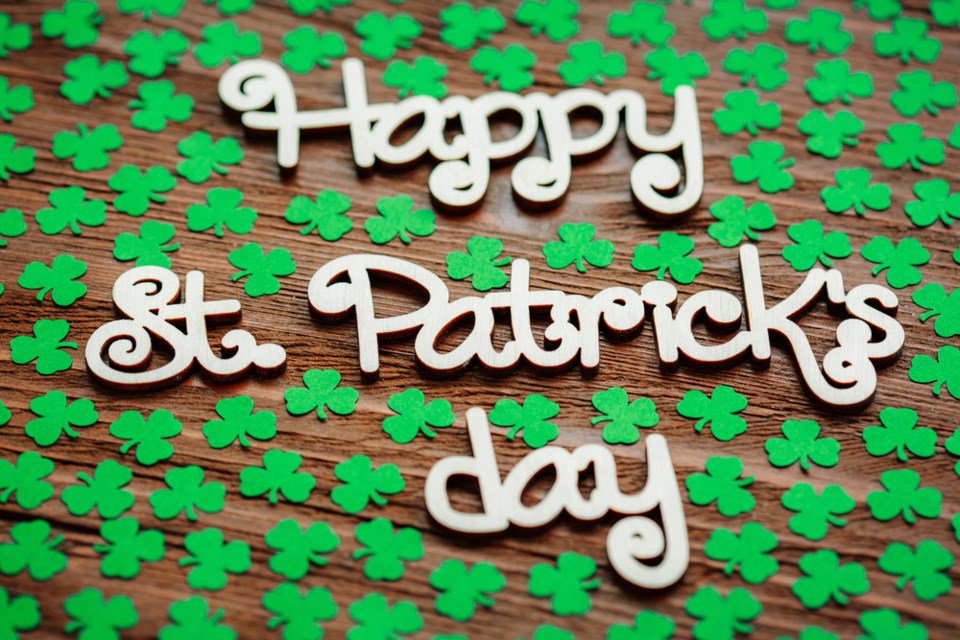Sunday, March 17 is St. Patrick’s Day! In between all the partying and the green-coloured, well…everything, it is easy to forget why we celebrate in the first place. Just who was St. Patrick? This week we look in-depth at St. Patrick, the patron saint of Ireland, and the annual celebration in his name.
Green was not the colour
Although green is the colour we now associate with St. Patrick’s Day, there was a time when that was not the case. Originally, St. Patrick — and indeed Ireland itself — was associated with the colour blue. Why the switch? According to historians, as Henry VIII assumed the throne, he created a coat of arms that had a golden harp on a blue background. This is still Ireland’s heraldic symbol and the golden harp is often associated with the country and its culture (as seen in the iconic Guinness logo).
Eventually, a great divide was created between the Irish and British rulers. The colour green was adopted as a symbol of rebellion. The rest, they say, is history.
St. Patrick and the Pagans
Ever wonder how St. Patrick became associated with the shamrock? One popular myth says that St. Patrick used the three-leaved Shamrock to teach pagans about the Christianity and the Holy Trinity. This first appears in writing in 1726, although it may be even older. It is unclear if this claim is true or not.
Of course, perhaps the most well-known story about St. Patrick, is the legend in which he drives the snakes out of Ireland. It is generally accepted, however, that there were never any snakes in Ireland. Rather, this story is thought to be an allegory for St. Patrick driving paganism, as symbolized by the snake, out of the country through evangelism.
That's Not My Name
St. Patrick is not his original name. Rather, St. Patrick used to be known as Maewyn Succat. His exact birth date and origin are not known, though some suggest he was born in England in the late fourth century.
At one point he was kidnapped and taken to Ireland as a slave. During this time he became quite religious. He eventually broke free and returned to his family in Britain, before ultimately returning to Ireland as a priest. He assumed the name Patrick after he was ordained.
St. Maewyn’s Day just doesn’t have the same ring to it.
One big party
St. Patrick’s Day has become a big celebration in the United States. In New York City, the annual St. Patrick’s Day parade draws millions of spectators and includes approximately 150,000 participants. It has been running annually since 1762.
Of course, if large parades don’t draw you in, you might to visit Hot Springs, Arkansas, home of the world’s shortest St. Patrick’s Day parade. The parade route is just 98 feet in length. That doesn’t stop the party though; this year’s celebration will include Grand Marshall Ralph Macchio (of Karate Kid fame), and live performances from Smashmouth and Three Dog Night.
Chicago, however, takes the celebration to whole other level by dying the Chicago River green. This annual practice dates back to 1962. The exact recipe of the dye is a closely-guarded secret. The colour will stick around for just a few hours.
Here in Canada, Montreal has held a St. Patrick’s Day parade continuously since 1824.
St. Patrick’s Day in the Caribbean
On the small island of Montserrat, St. Patrick’s Day is a big deal. Irish people were originally sent there as indentured servants who were exiled by Oliver Cromwell. As a result, many of the inhabitants still claim Irish ancestry. Montserrat is the only country in the world aside from Ireland to celebrate St. Patrick’s Day as a national holiday (although it is a holiday in Newfoundland and Labrador — for government employees only). In fact, in Montserrat St. Patrick’s Day is turned into a week-long festival.
Perhaps next year you will want to visit the “Emerald Isle of The Caribbean.”




